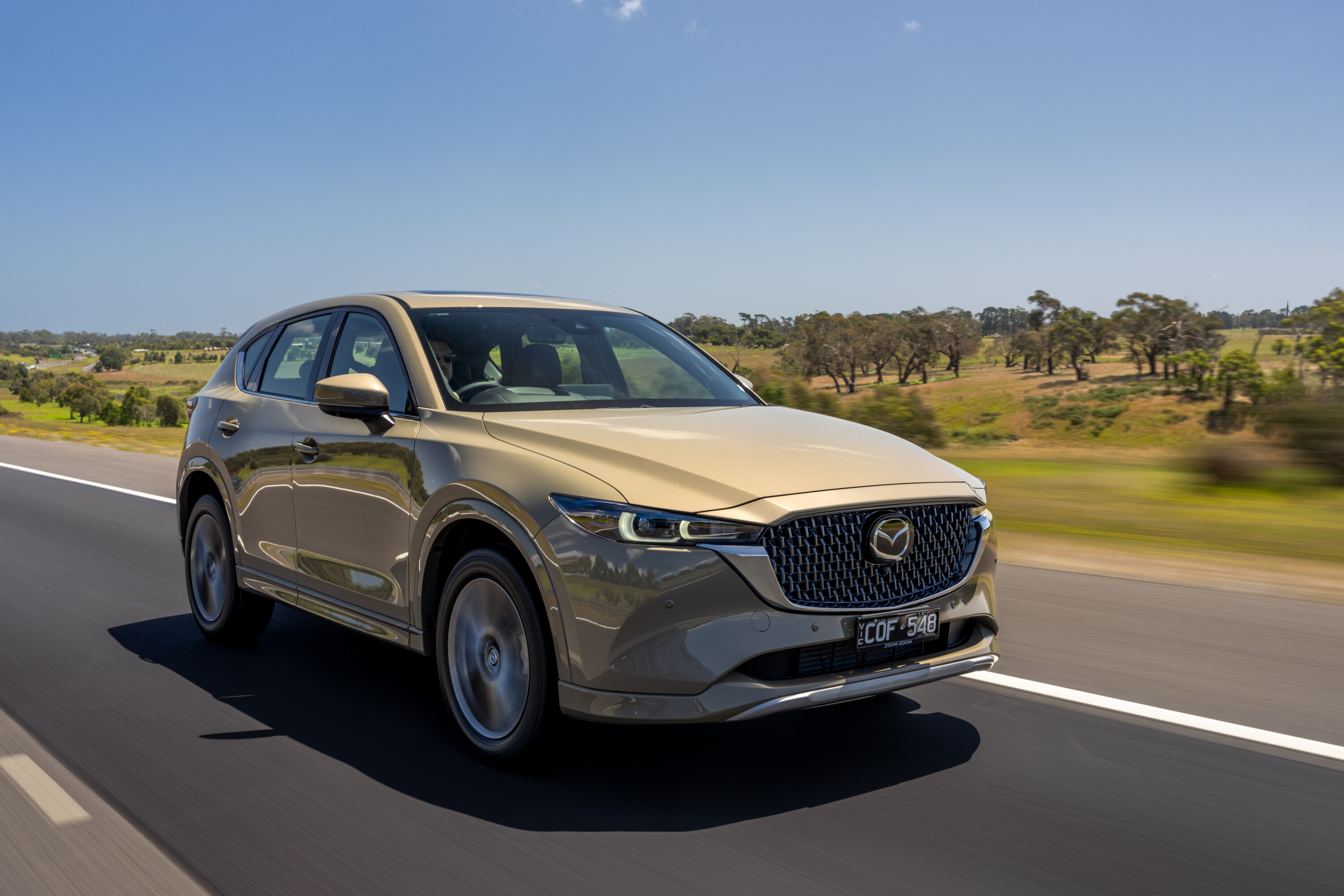Score breakdown
Things we like
- Powerful turbo engine
- Well-tuned dynamics
- Premium-feeling cabin
Not so much
- High fuel consumption
- Less rear seat and boot space than rivals
- It’s starting to feel old
The Mazda CX-5 is the brand’s breadwinner – both globally and in Australia.
Before the current, hybrid-dominated Toyota RAV4 appeared in 2019, the CX-5 was Australia’s best-selling SUV. It has now slipped behind the RAV4, other midsize SUVs like the Mitsubishi Outlander, and the cheap MG ZS small SUV.
Still, the CX-5 sells in big numbers – around 30,000 annually in Australia – and it’s Mazda’s best-selling vehicle.
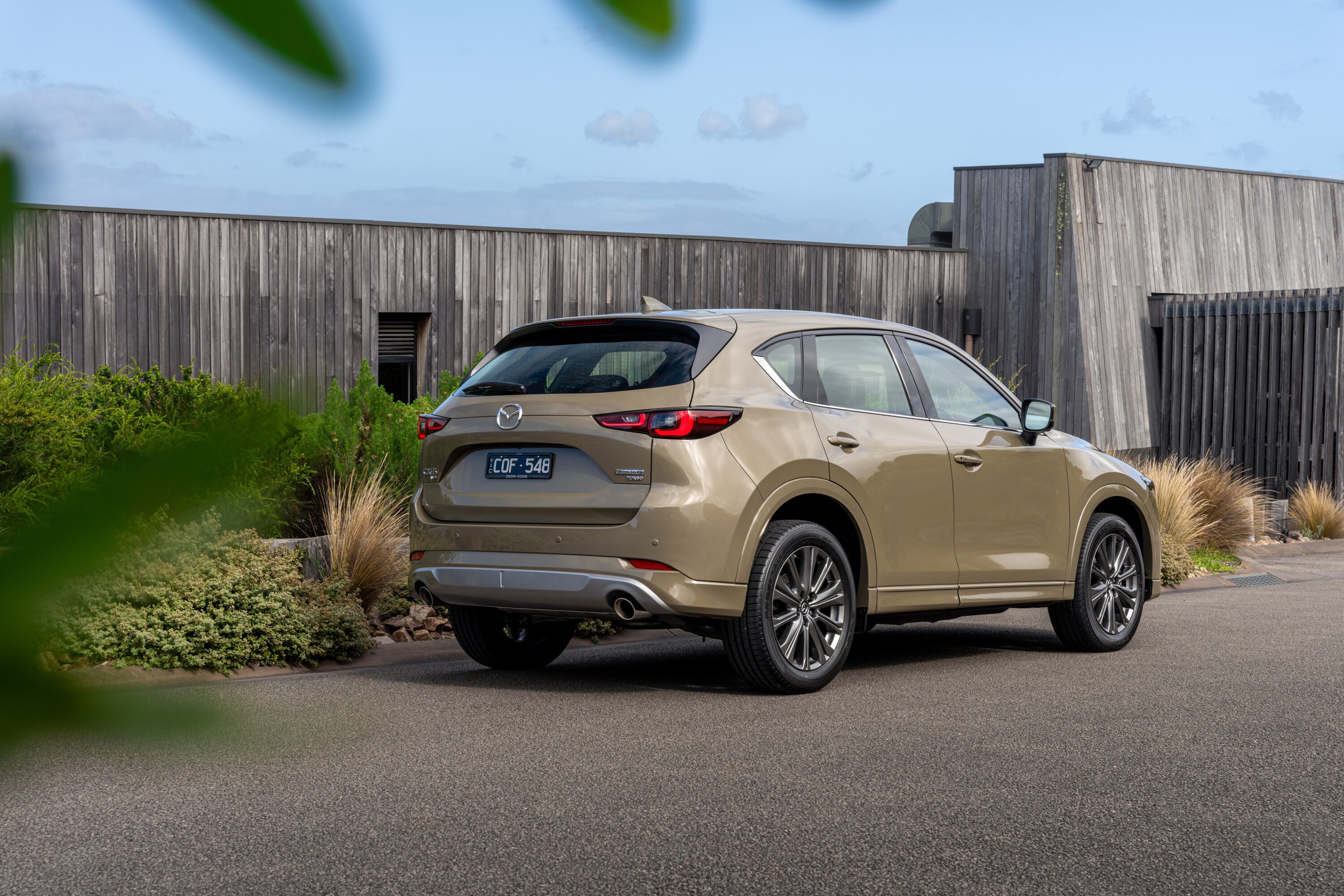
First launched in 2017, the second-generation Mazda CX-5 – a heavily updated version of the first CX-5 unveiled in 2011 – is approaching the end of its lifecycle, with Mazda confirming a third-generation CX-5 is in development with a crucial petrol-electric hybrid option.
Until the all-new model arrives, we jumped behind the wheel of the 2024 Mazda CX-5 G35 Akera turbo AWD to see if it’s worth adding this midsize SUV to your consideration list.
Changes applied to the Akera for 2024 include touchscreen functionality when using Apple CarPlay or Android Auto, a hands-free function for the electric tailgate (previously removed due to the semiconductor chip shortage), a new-look front grille, chrome accents for the lower bumpers, and a ‘Platinum Quartz’ colour replacing ‘Sonic Silver’.
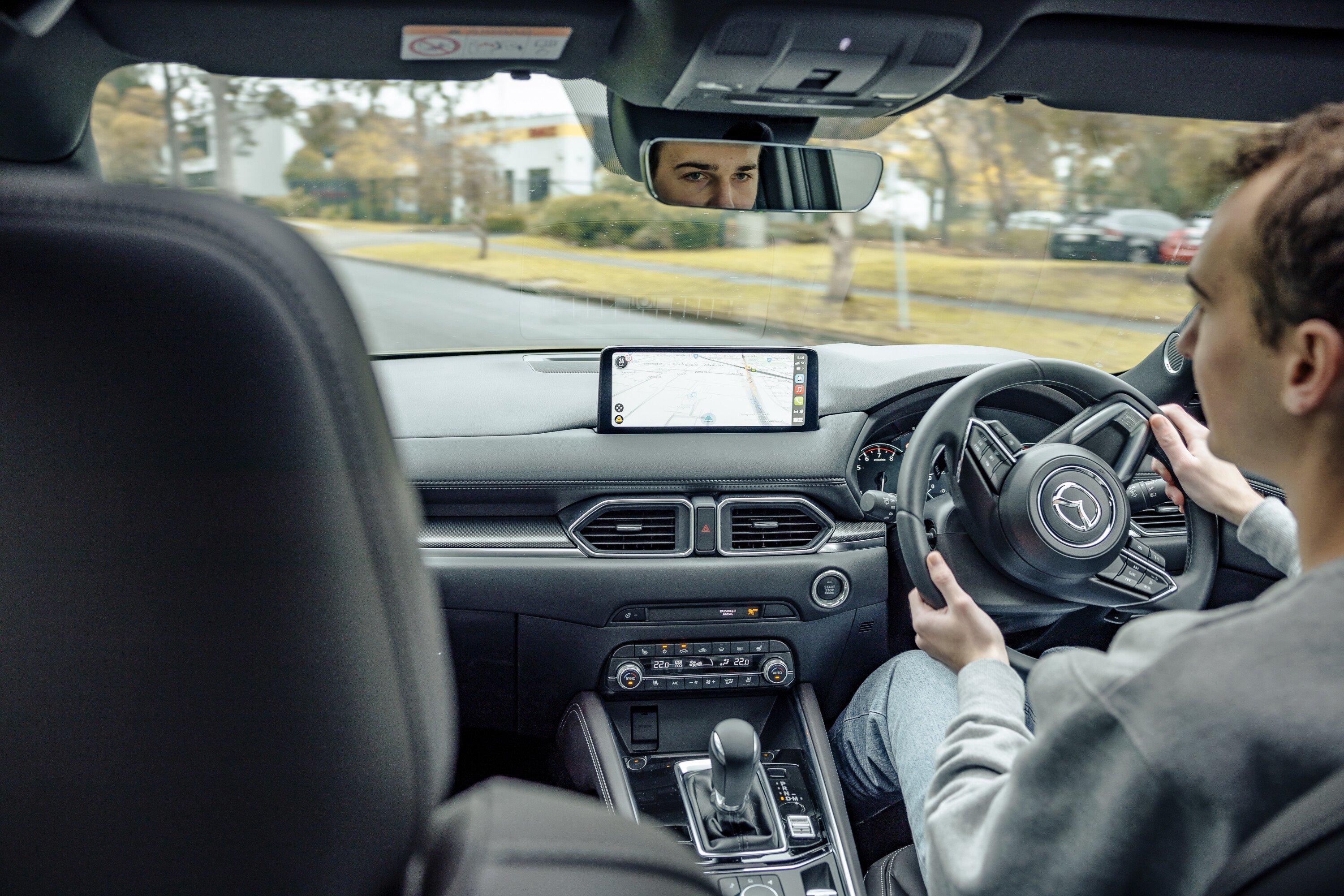
JUMP AHEAD
- How much is it, and what do you get?
- Where is this model in its lifecycle?
- What are the Mazda CX-5’s rivals?
- Interior quality, comfort, space and storage
- Technology in the cabin
- What is it like to drive?
- How is it on fuel?
- How safe is it?
- Warranty and running costs
- VERDICT
- Specifications
How much is it, and what do you get?
| 2024 Mazda CX-5 G35 Akera features | |
|---|---|
| 19-inch alloy wheels | Heated front and outer rear seats; steering wheel |
| 10.25-inch Mazda Connect infotainment system | LED headlights |
| Wireless Apple CarPlay and Android Auto | 7-inch semi-digital instrument cluster |
| 10-speaker Bose audio system | Dual-zone climate control |
| Dark brown Nappa leather upholstery | 360-degree camera system |
The G35 Akera turbo is the most CX-5 you can buy in Australia, priced from $55,000 before on-road costs.
The CX-5 line-up – available with a lethargic 2.0-litre non-turbo petrol, a class-acceptable 2.5-litre non-turbo petrol or the more-powerful 2.5-litre turbo-petrol found here – starts from $36,590 before on-roads. The 2.2-litre twin-turbo diesel was axed for 2024.
Top-of-the-range Akera variants are fully loaded, adding a 360-degree camera, ventilated front seats, heated outer rear seats, a heated steering wheel, Nappa leather upholstery, a frameless rear-view mirror, and colour-matched body cladding over the GT SP.
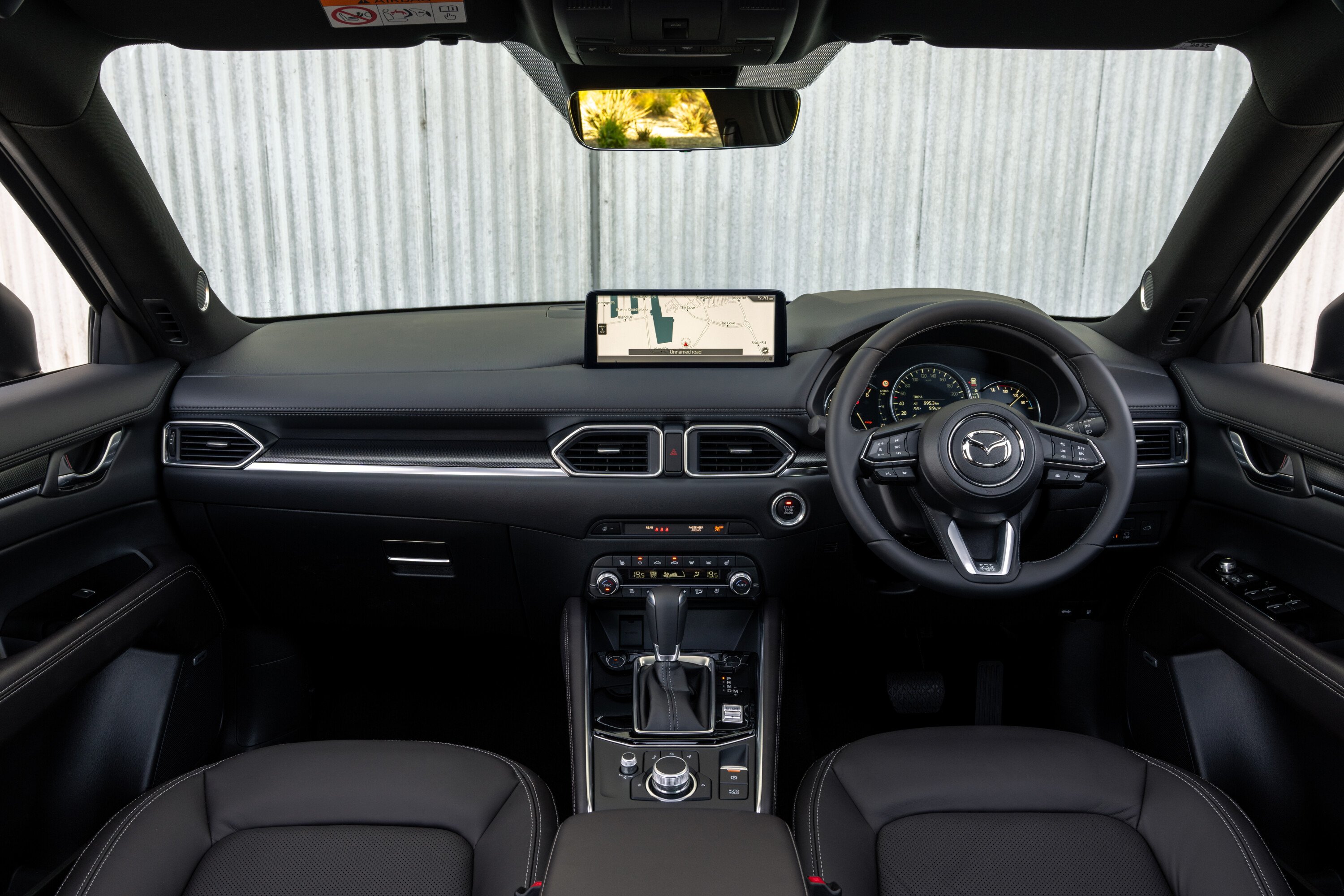
While the 360-degree camera, ventilated front seats and heated rear seats are handy additions, the GT SP could represent better value.
The GT SP still includes features like a 10-speaker Bose audio system, a hands-free electric tailgate, a sunroof, leather upholstery, heated front seats, and electric adjustment for the front seats with two-position driver’s seat memory.
A 10.25-inch Mazda Connect infotainment system, a 7-inch semi-digital instrument cluster and a windscreen-projected head-up display are standard across the CX-5 line-up.
There are four no-cost exterior colours available for the CX-5: Jet Black, Eternal Blue, Deep Crystal Blue and Platinum Quartz. Rhodium White, Machine Grey, Polymetal Grey, Soul Red Crystal and Zircon Sand (our tester’s colour) cost $795 extra.

Where is this model in its lifecycle?
The current second-generation ‘KF’ series Mazda CX-5 was unveiled in late 2016 and appeared in Australia in March 2017.
It is a heavy refresh of the first CX-5, which debuted in 2011 on the same wheelbase and platform as the last Mazda 3 hatch.
Mazda has applied several revisions to the CX-5 line-up, usually annually, including the addition of the 2.5-litre turbo-petrol in 2018 and a significant facelift at the start of 2022.
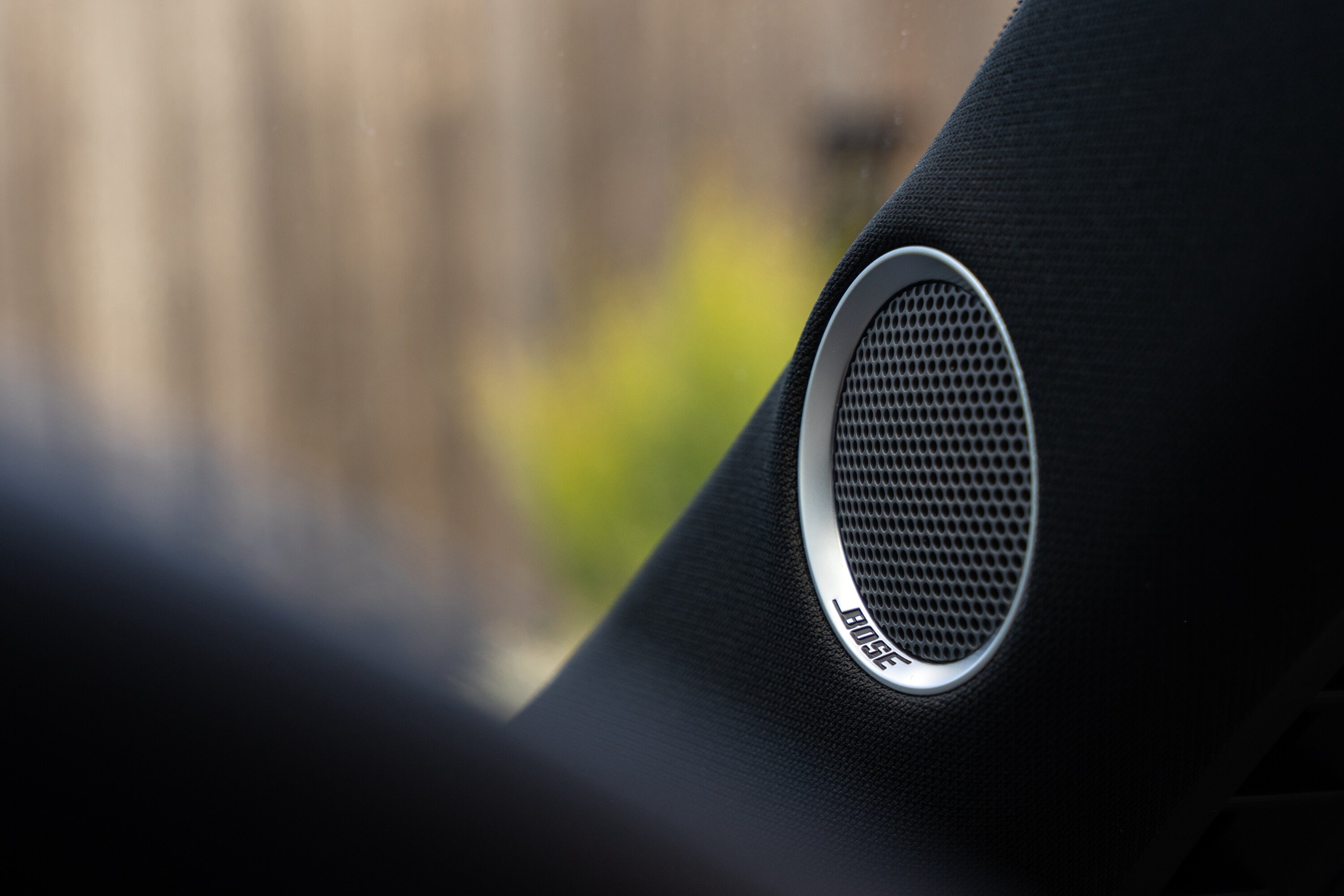
However, there is only so much that can be changed, and the CX-5 is starting to feel a little old – although it has at least aged well, in our eyes.
An all-new, third-generation Mazda CX-5 has been officially locked in with an available hybrid powertrain. It is expected to debut in 2025 as a Model Year 2026 vehicle.
The new model should be larger in most dimensions – addressing one criticism of the current model, which has a tighter cabin than its newer rivals that continue to grow larger.
What are the Mazda CX-5’s rivals?
The Mazda CX-5 sits in the crowded midsize SUV segment in Australia.
The main rivals to the top-of-the-range CX-5 G35 Akera include the:
- Toyota RAV4 Cruiser Hybrid AWD ($54,410 before on-roads)
- Volkswagen Tiguan 162TSI R-Line AWD ($60,590 before on-roads)
- Hyundai Tucson Premium Hybrid AWD ($59,600 before on-roads)
- Honda CR-V E:HEV RS FWD ($59,900 drive-away).
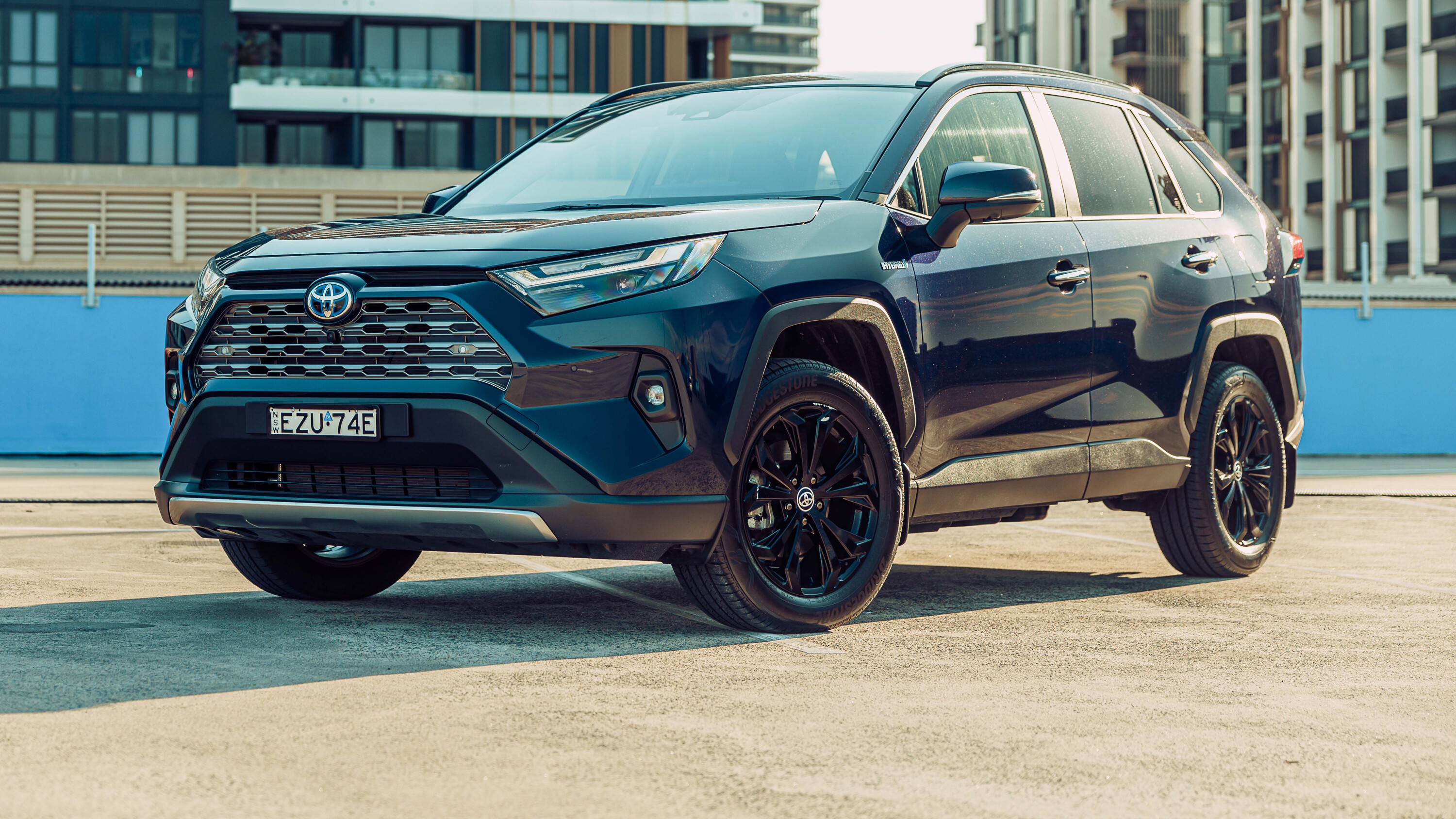
Interior quality, comfort, space and storage
A standout feature of the Mazda CX-5 is its high-quality cabin materials, with a solid door thunk, a soft dashboard, (mostly) tactile switchgear, and padded leather on the front and rear door cards.
The dark brown Nappa leather upholstery in the Akera is soft and comfortable, with this writer experiencing no discomfort on a lengthy drive, and we think the more-pronounced silver stitching added for 2024 looks quite tasteful.
Also new is a black honeycomb-look trim on the dashboard and door panels, replacing the previous wood finish. It’s an interesting decision, as we think the old wood trim looked more premium.
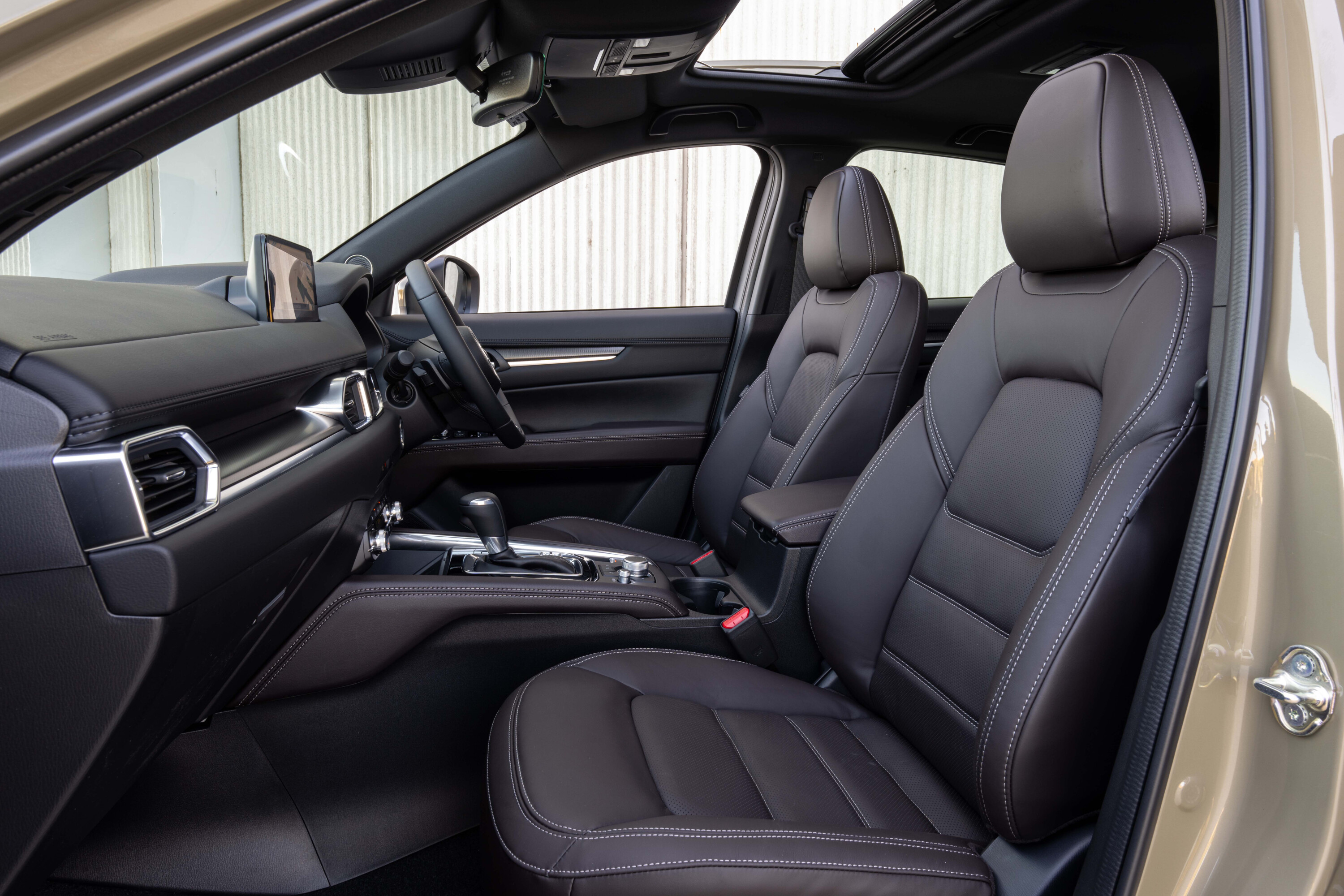
Most switches in the CX-5 are nicely weighted, though the wiper and indicator stalks feel lower in quality than newer Mazda models like the CX-30 and CX-60.
The driver’s seat can be electrically adjusted 10 ways with two-position memory, while the passenger seat can move six ways. We appreciated the heated seats and steering wheel during Melbourne’s current winter chill, while the ventilated front seats work well in summer from our past experiences with the CX-5.
Rear-seat space is fine for occupants under 180 centimetres, but people who are taller will face limited head and kneeroom.
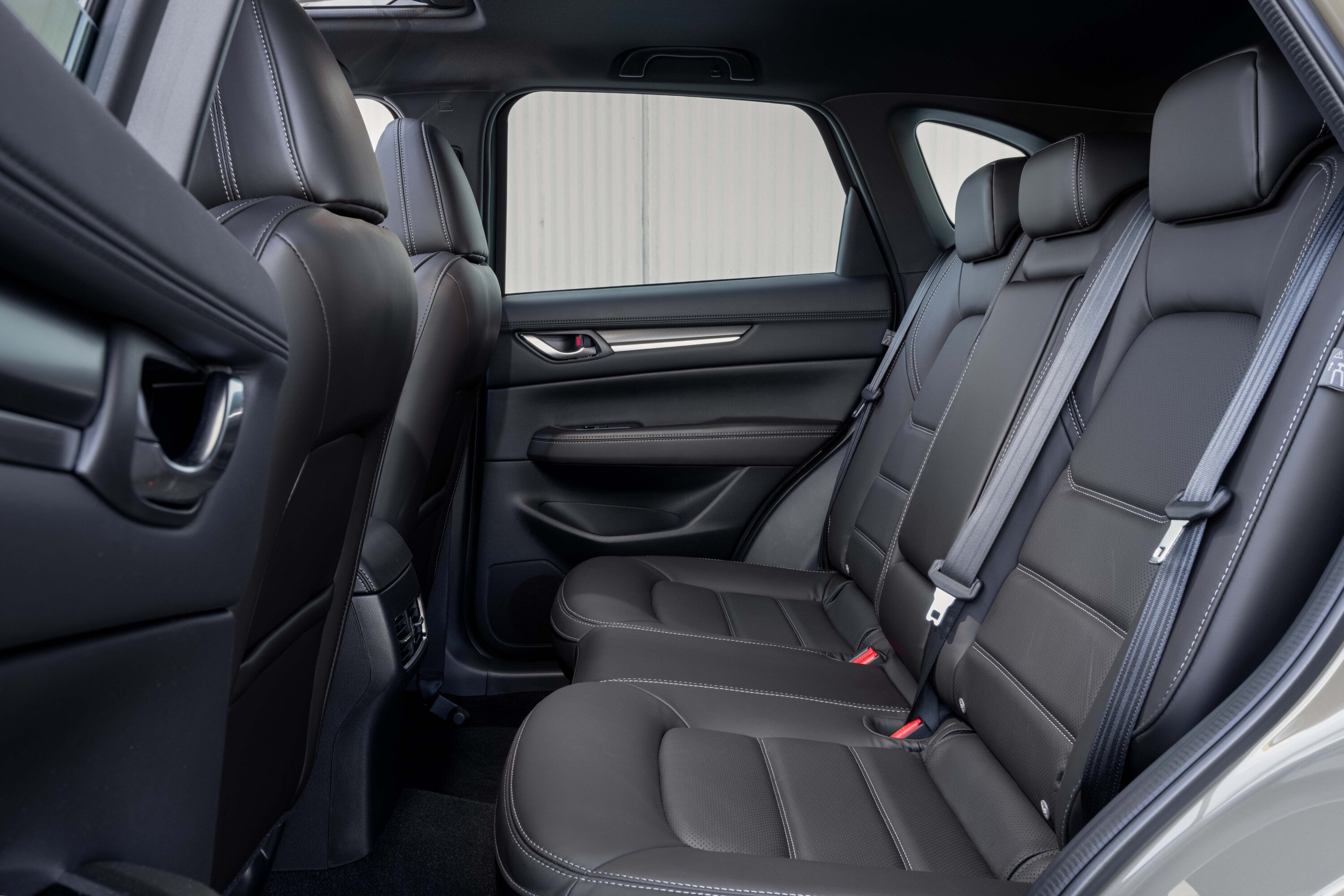
Thanks to the CX-5’s narrower body, it’s also quite cosy if there are three adults sitting abreast. Toe room is accomodating, and the Akera includes a subtle white LED ambient light under the front seats.
The CX-5 includes three top-tether anchors and two ISOFIX points for child seats, adjustable rear air vents, storage pockets behind each seat, and 90-degree wide opening rear doors.
Storage is best described as adequate, with a centre console bin that could be larger, two cup holders that get in the way of the rotary controller if you have anything taller than a standard-sized coffee cup or soft drink can, bottle holders in the doors, and a small glovebox consumed by the handbook.
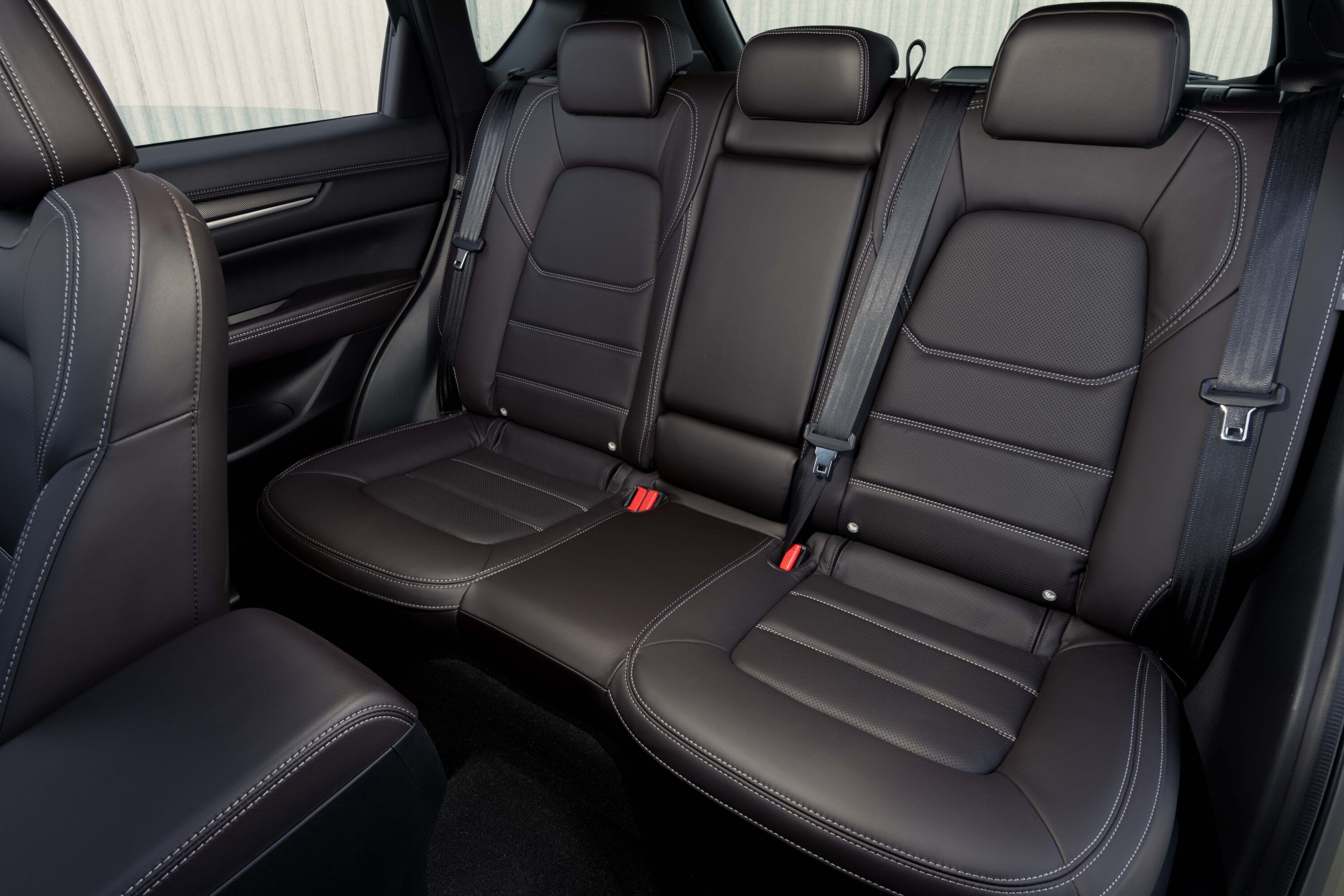
Second-row amenities include two USB-A ports and three-stage controls for the heated seats found in the fold-down centre armrest.
This restricts their use when a person is sitting in the middle seat, and the heated seat controls being positioned right above the armrest can lead to them being activated or deactivated inadvertently – not ideal on a hot day.
Mazda’s latest SUVs – the CX-60 and CX-90 – have USB-C ports throughout, with the second-row outlets and heated seat controls positioned on the back of the centre console instead of the fold-down armrest, which will hopefully soon filter into the next CX-5.
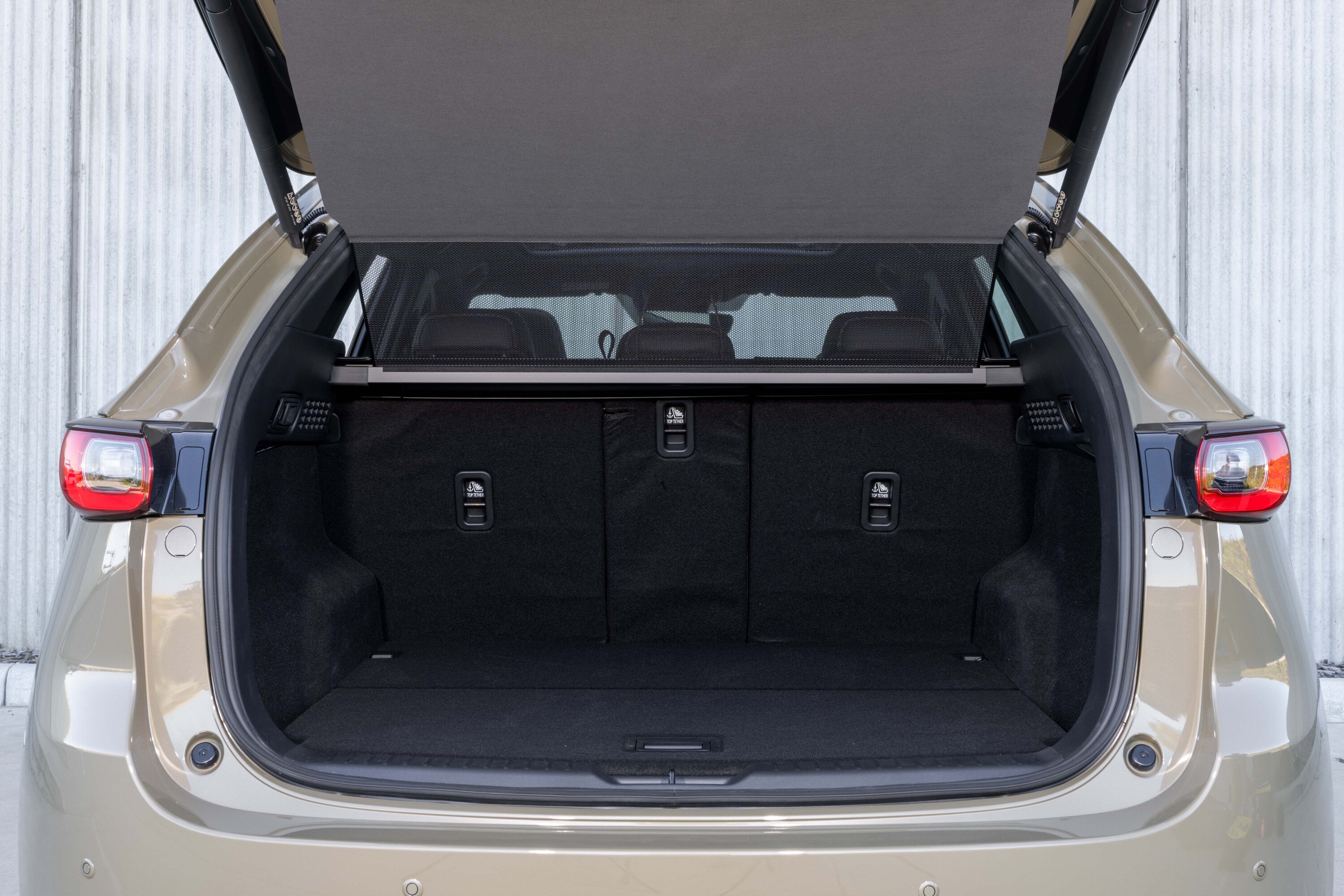
Boot space
The Mazda CX-5 has a 438-litre luggage capacity with all seats in place and the boot floor in its lowest position, rising to 1340L with the second-row folded.
A handy addition to the CX-5 is the two-position boot floor, which can allow for a flush loading lip or be moved lower for more depth, and reversed between a carpeted finish or a water-resistant hard plastic side for wet or dirtier items.
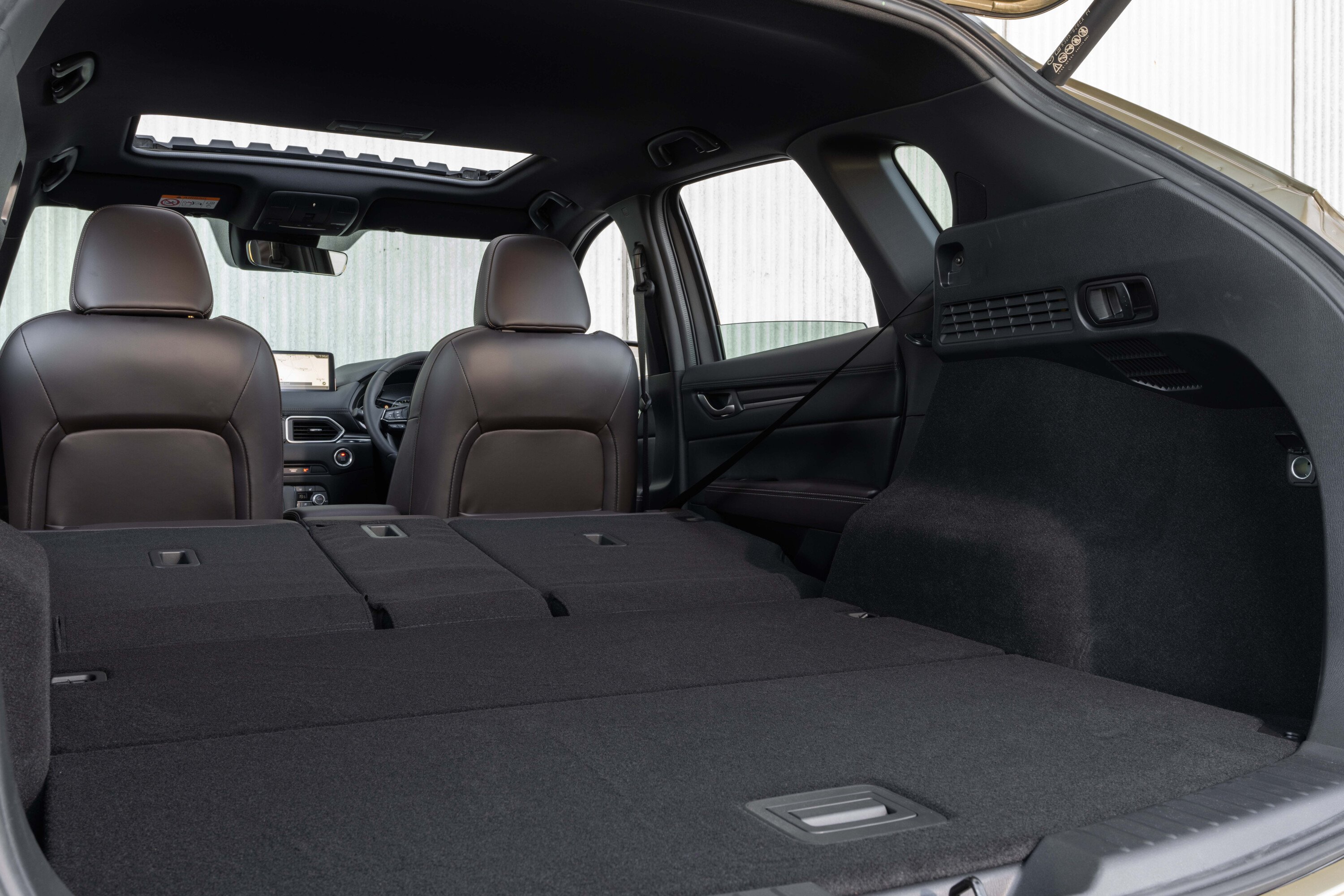
We’re also fans of the retractable cargo cover, which lifts out of the way when attached to the tailgate, and the remote handles to control the 40:20:40 split-fold rear seats from the boot.
Compared to its rivals, the CX-5 has a smaller boot – it’s less than some small SUVs like the Kia Seltos and GWM Haval Jolion – with a narrower opening. This could limit its appeal for people who frequently carry bigger things, such as prams, bulky luggage or a large-size dog.
A space-saver spare wheel is included under the boot floor.
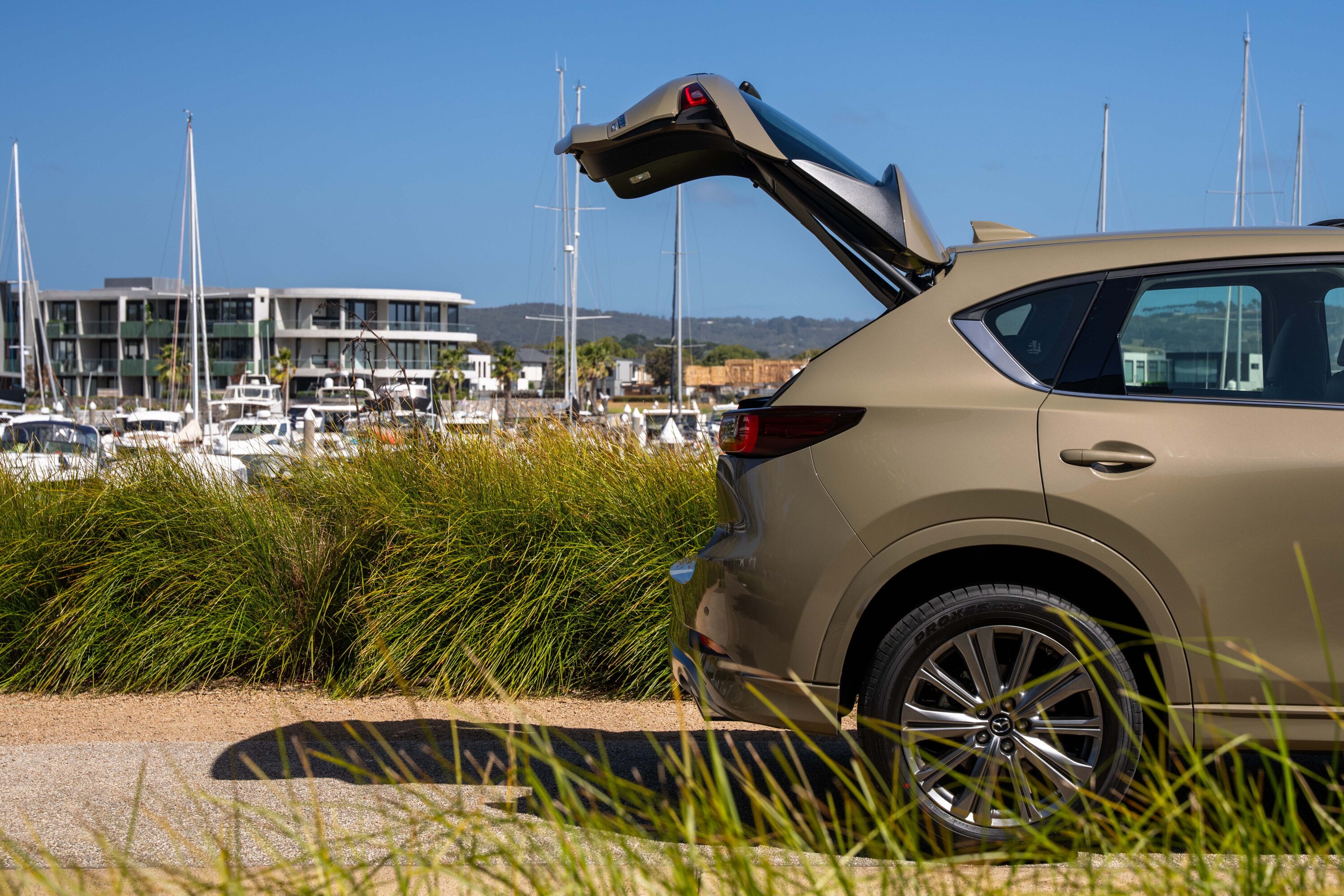
Mini matchup: Boot space
| MODEL | WHEELBASE | BOOT |
|---|---|---|
| Mazda CX-5 | 2700mm | 438-1340L |
| Toyota RAV4 | 2690mm | 580-1690L |
| Volkswagen Tiguan | 2681mm | 615-1655L |

Technology in the cabin
Inside the cabin is where the CX-5 starts to show its age, despite Mazda’s attempts to keep it fresh.
Ahead of the driver is a 7-inch semi-digital instrument cluster, which sits between an analogue tachometer, a fuel gauge and an engine coolant temperature reading.
Its customisation is limited, with the screen always displaying an analogue-look speedometer and a fuel distance indicator. Driver’s can then select between a trip computer, a second distance-to-empty indicator, a maintenance monitor, or an adaptive cruise control display.
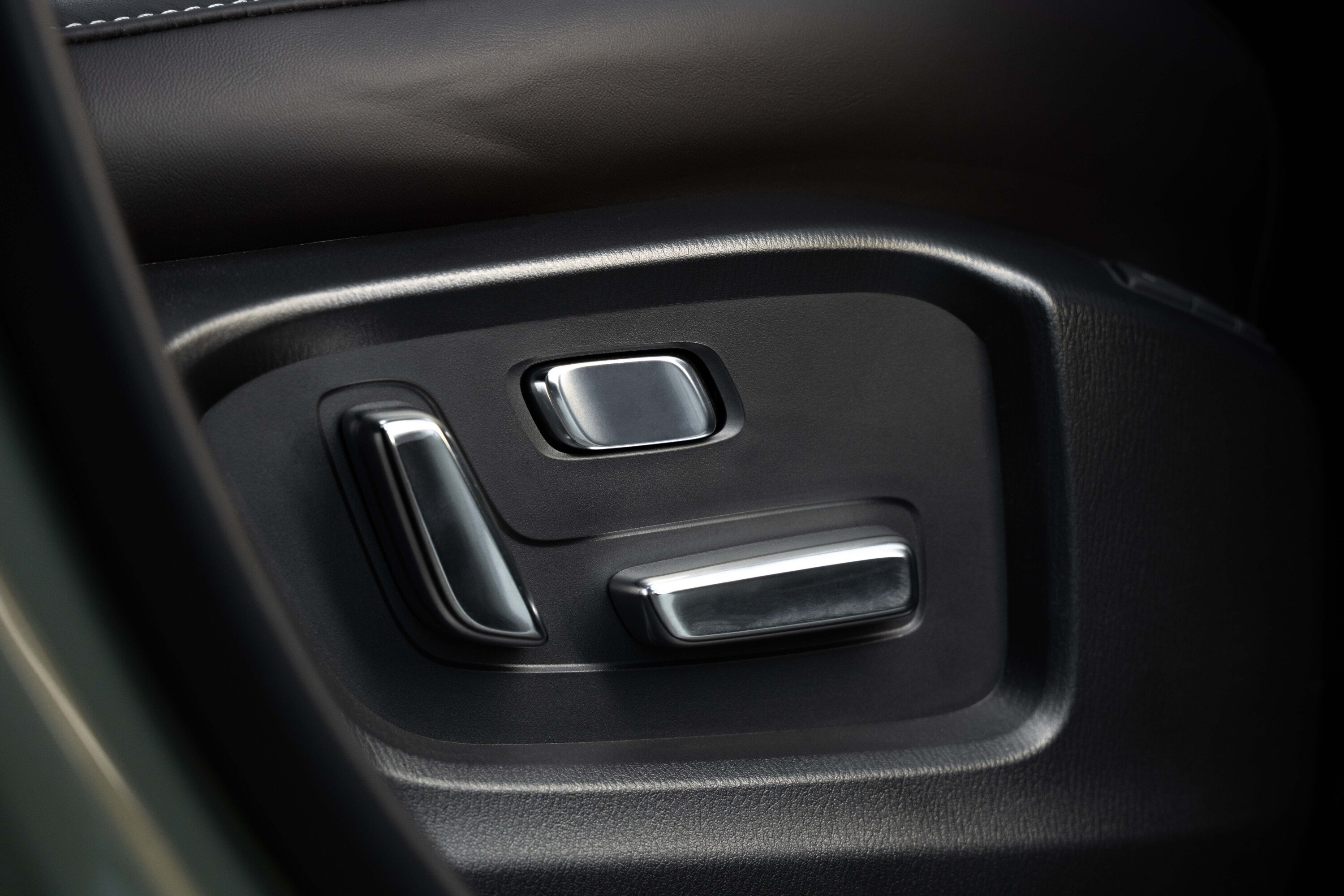
The next CX-5 is likely to feature a full-digital instrument cluster with more customisation, similar to that seen in the CX-60 and CX-90, bringing the CX-5 in line with most other vehicles in the class.
The standard windscreen-projected head-up display offers acceptable clarity and a legible display when wearing polarised sunglasses. It isn’t as detailed as the 12-inch unit available in the new Hyundai Tucson Premium.
All CX-5 variants include a class-average 10.25-inch widescreen Mazda Connect infotainment system. Rivals like the Tucson and Sportage offer a larger 12.3-inch screen while others such as the Outlander and CR-V have smaller displays.
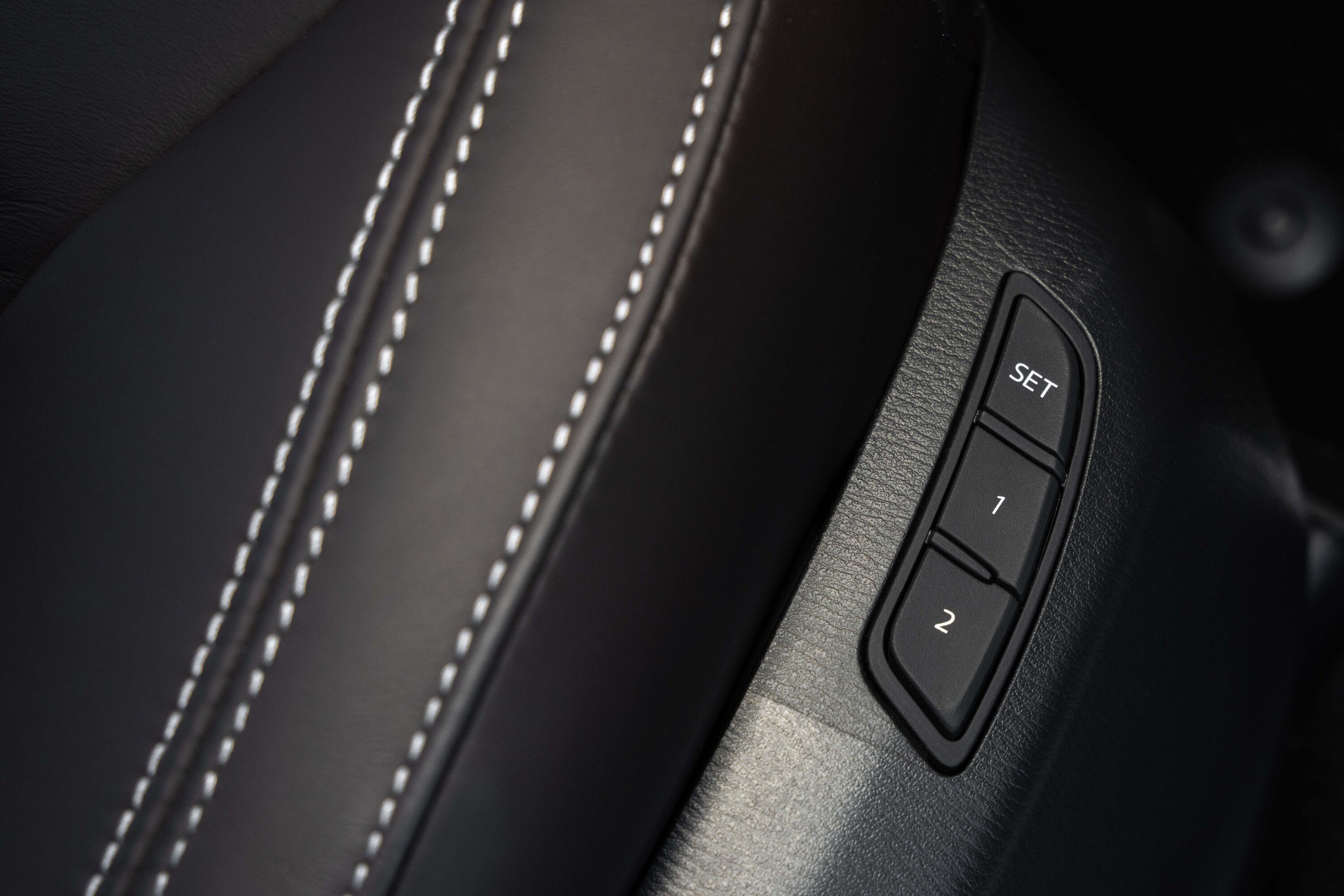
It includes DAB+ digital radio, wireless or wired Apple CarPlay and Android Auto, built-in satellite navigation
The CX-5 now offers touchscreen functionality when connected to Apple CarPlay and Android Auto – including while on the move. While this is handy for inputting addresses or other information while stationary, or quickly moving back to the home screen, the infotainment system is positioned too far back for comfortable use.
Instead, as with other vehicles with Mazda’s own infotainment, there is a BMW-esque rotary controller on the centre console to control the system. It can feel overwhelming at first – especially if your current car is touchscreen-only – but it is easy to get used to, and there are some shortcut buttons.
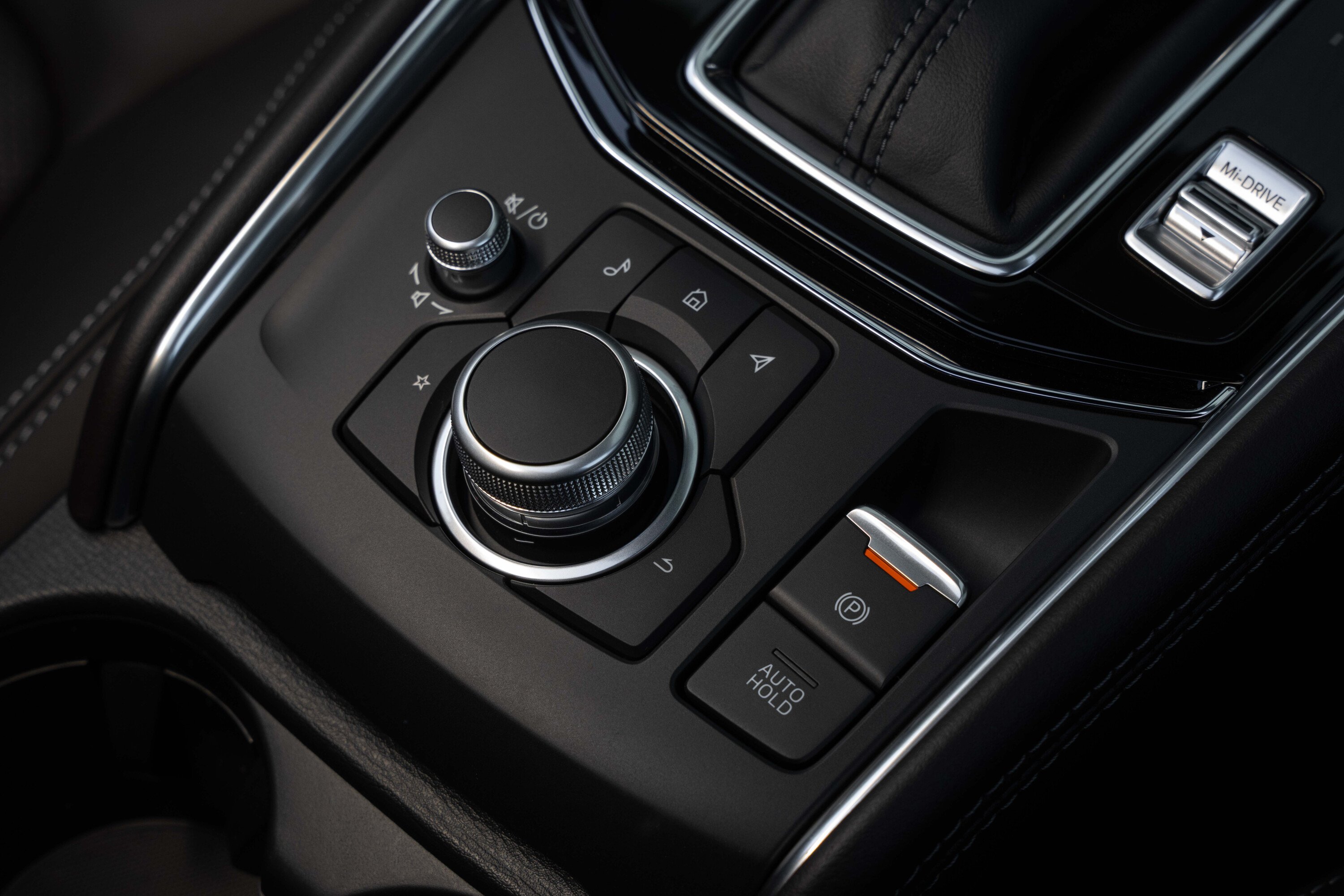
The built-in system must be controlled with the rotary controller.
The CX-5 lacks the newer version of the dial found in the CX-30 and CX-60, which feels more intuitive in the hand and also allows the volume dial to be pushed sideways to skip forward or back.
We found the wireless Apple CarPlay connection to be reliable during our test drive. The connection will default to wireless, even when plugged into USB, but you can select a wired-only connection when pairing your phone if desired.
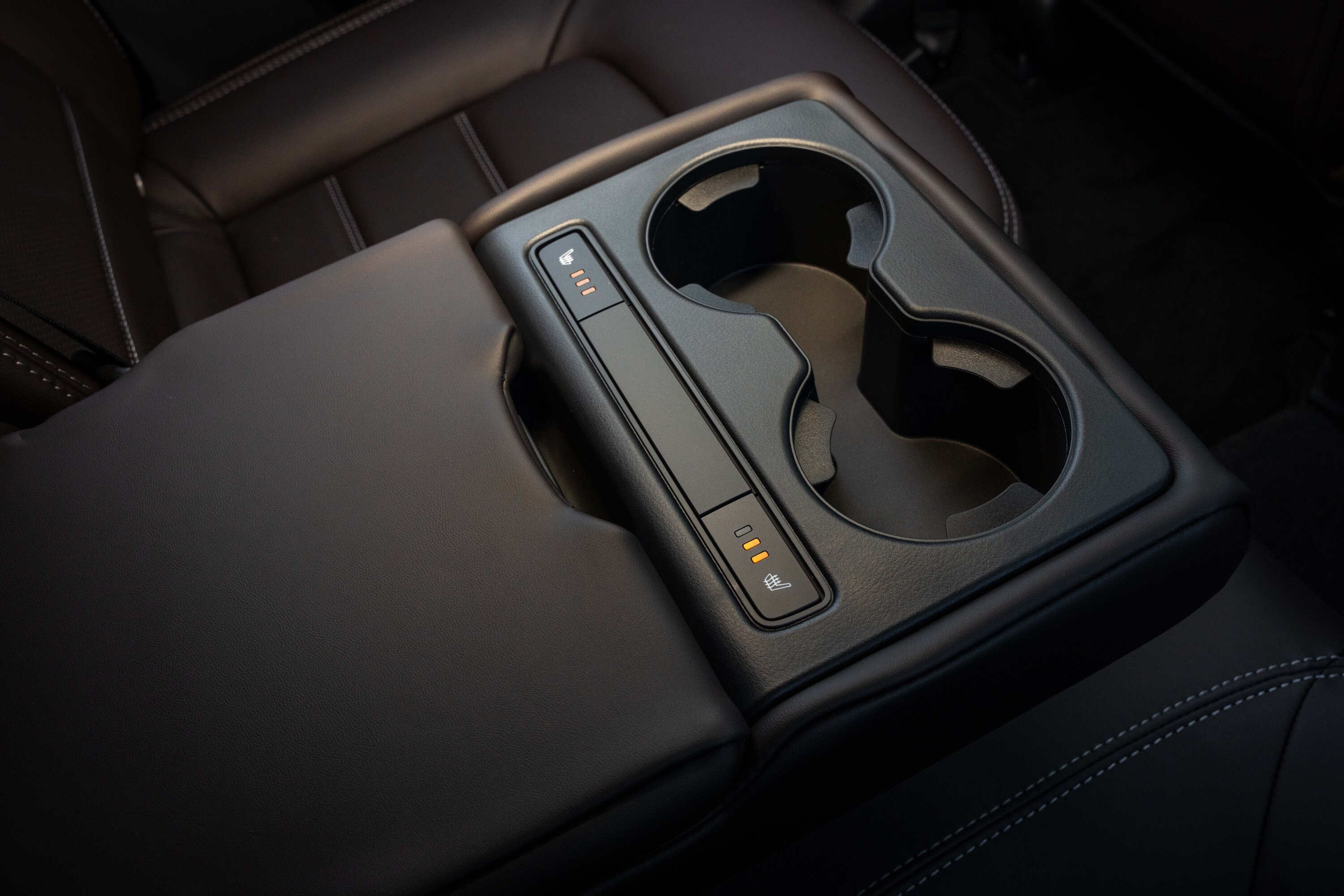
In contrast, the wireless phone charger is temperamental, requiring some adjustment to find the correct position for a successful charge.
It’s also set on an awkward angle – it has essentially been retrofitted into the CX-5’s older cabin – and we found our phone would slide out of place at times. The wireless charge speed is very slow, failing to adequately charge a phone on a several-hour drive.
While plugging in is less convenient, you’ll have no trouble with charging failures or slow charge times when connected to one of the 15-watt illuminated USB-C ports in the centre console.
The 10-speaker Bose audio system provides good clarity and includes a subwoofer.
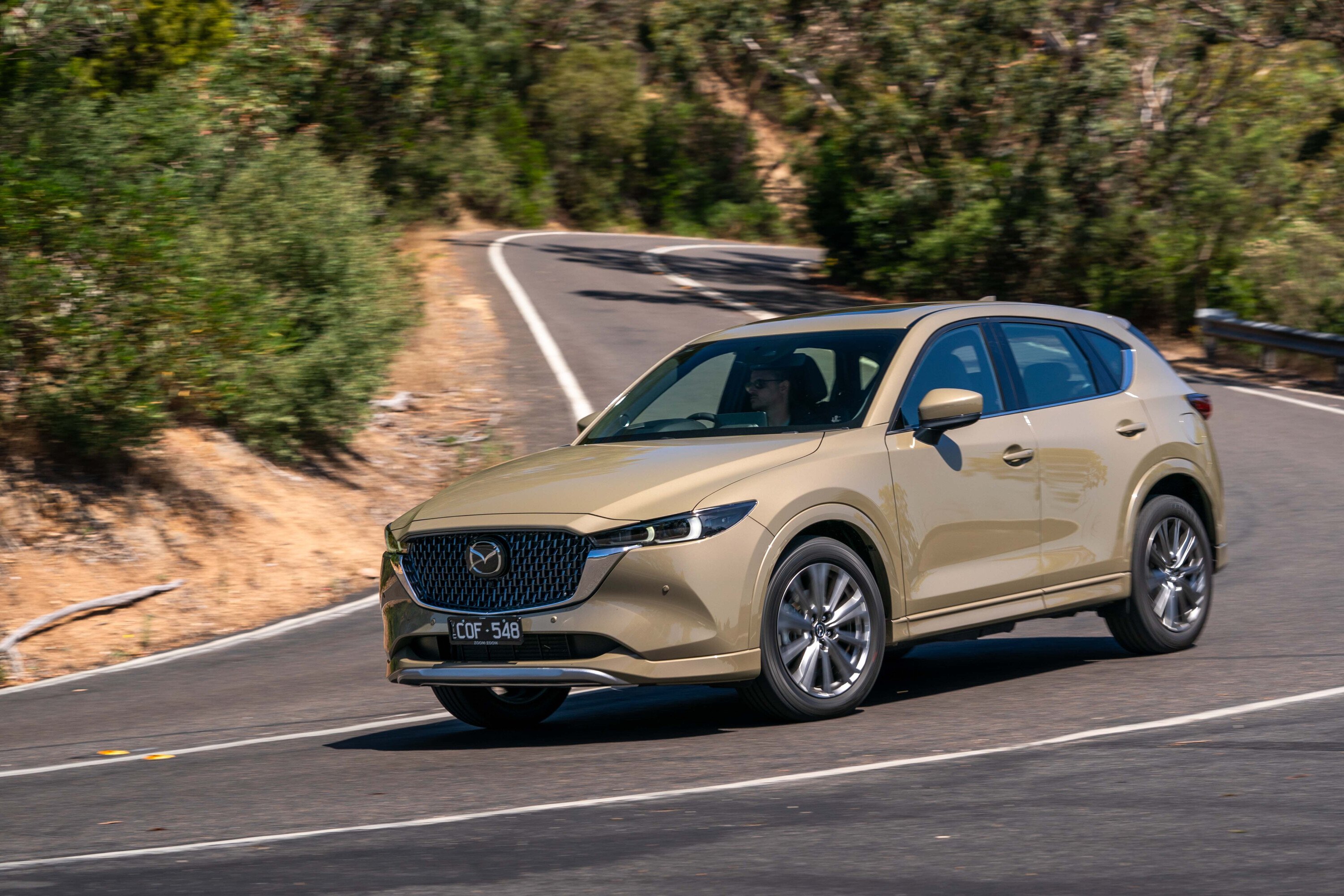
What is it like to drive?
Under the bonnet, the CX-5 G35 Akera features Mazda’s 2.5-litre turbocharged four-cylinder borrowed from the now-departed CX-9.
With 170kW and a diesel-like 420Nm on tap, it’s no slouch, with the 0-100km/h dash taking around eight seconds. The high torque output – available from 2000rpm – is the real benefit of the turbo with little hesitation when the accelerator is pushed.
The 0-100km/h dash in the G35 will take approximately 7.5 seconds compared to around 10 seconds for non-turbo ‘G25’ models.
The six-speed torque-converter automatic transmission is smooth and well-tuned – it’s not exactly a brand-new innovation – but it would be nice to see an eight-speed auto to improve acceleration and potentially reduce fuel consumption.

Putting the car in Sport mode will hold the gears for longer and add some weight to the steering for a more-engaging drive, if at the expense of fuel economy.
If you’re looking for a midsize SUV that is enjoyable to drive, the CX-5 is one of the better options in the segment. It has been continually refined over the past decade, with accurate and confidence-inspiring steering at higher speeds. Turn-in is also great, with assistance from the G-Vectoring Plus system to shift the vehicle’s weight forward in corners.
The addition of more sound deadening over the years means road noise is now quite minimal, and the multi-link rear suspension absorbs speed humps and undulations well.
Opting for the turbo brings a higher braked towing capacity at 2000 kilograms versus 1800kg for naturally-aspirated models.

How is it on fuel?
The 2.5-litre turbo-petrol in the G35 Akera is one of the thirstiest choices in the segment – especially compared to its hybrid rivals like the RAV4 and Tucson, which still offer a similar level of performance.
Officially, the CX-5 turbo is rated to use 8.2L/100km on a combined cycle, 6.9L/100km on the highway (this would be very hard to achieve, based on our testing), and a thirsty 10.3L/100km in low-speed, frequent-stop urban environments.
After a 536-kilometre road test, a fuel top-up revealed we achieved 8.3L/100km – the trip computer displayed 8.6L/100km – but this included a significant highway drive, which contributed towards the lower number.
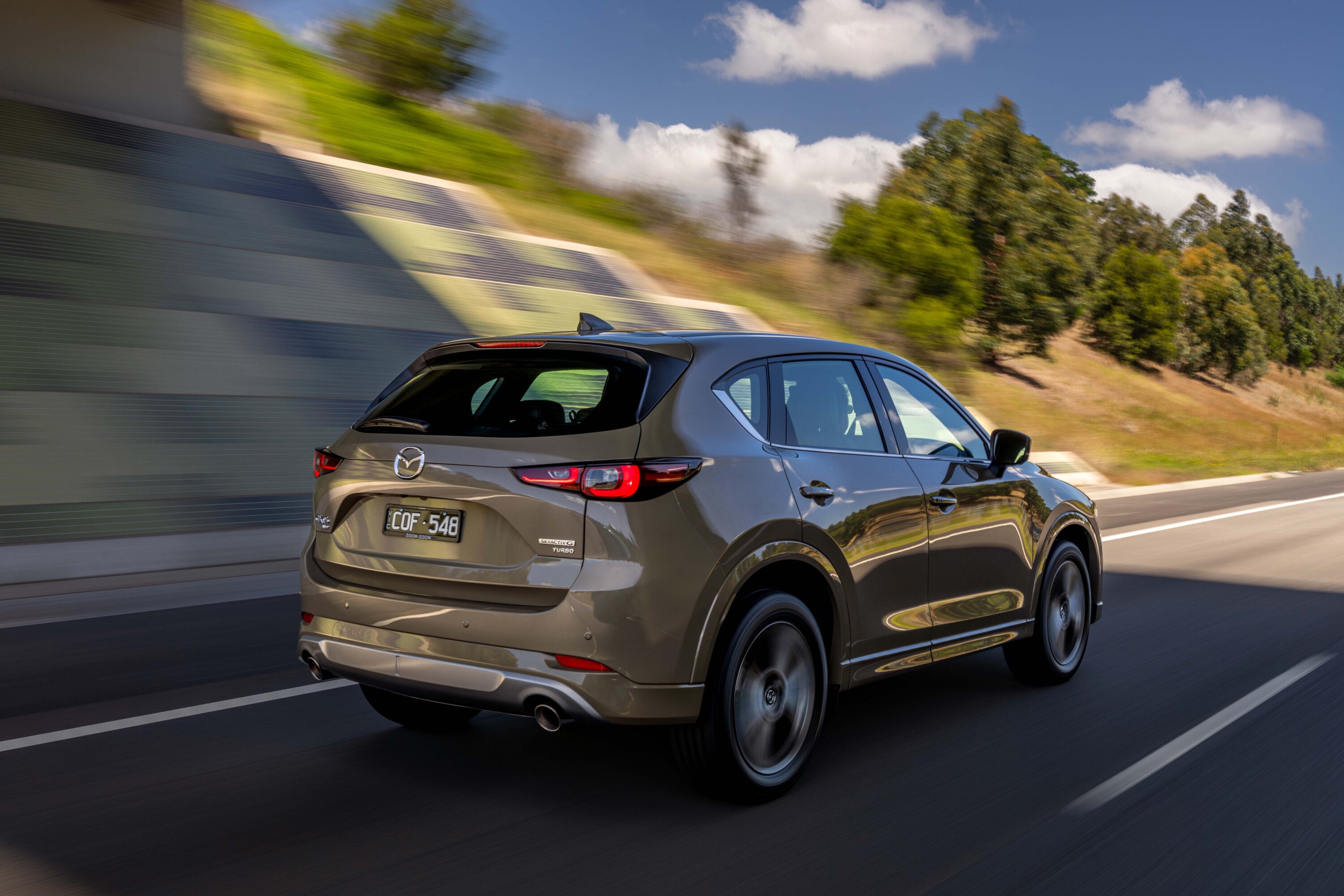
Frequent real-world driving in lower-speed urban areas or shorter highway stints are likely to see fuel use sit closer to 10L/100km.
We asked the owner of a three-year-old CX-5 Akera turbo about their average fuel use, who said it sits between nine and 11 litres per 100 kilometres from driving around 30 kilometres daily in urban and highway conditions, enabling a 550 to 600-kilometre range from its 58-litre fuel tank. Each situation will vary, of course.
We’d recommend the more-efficient 2.5-litre non-turbo ‘G25’ powertrain if you don’t spend much time on the open road, which is where the turbo shines.
The CX-5 G35 turbo can be fuelled with 91RON unleaded, and includes an idle stop/start system.
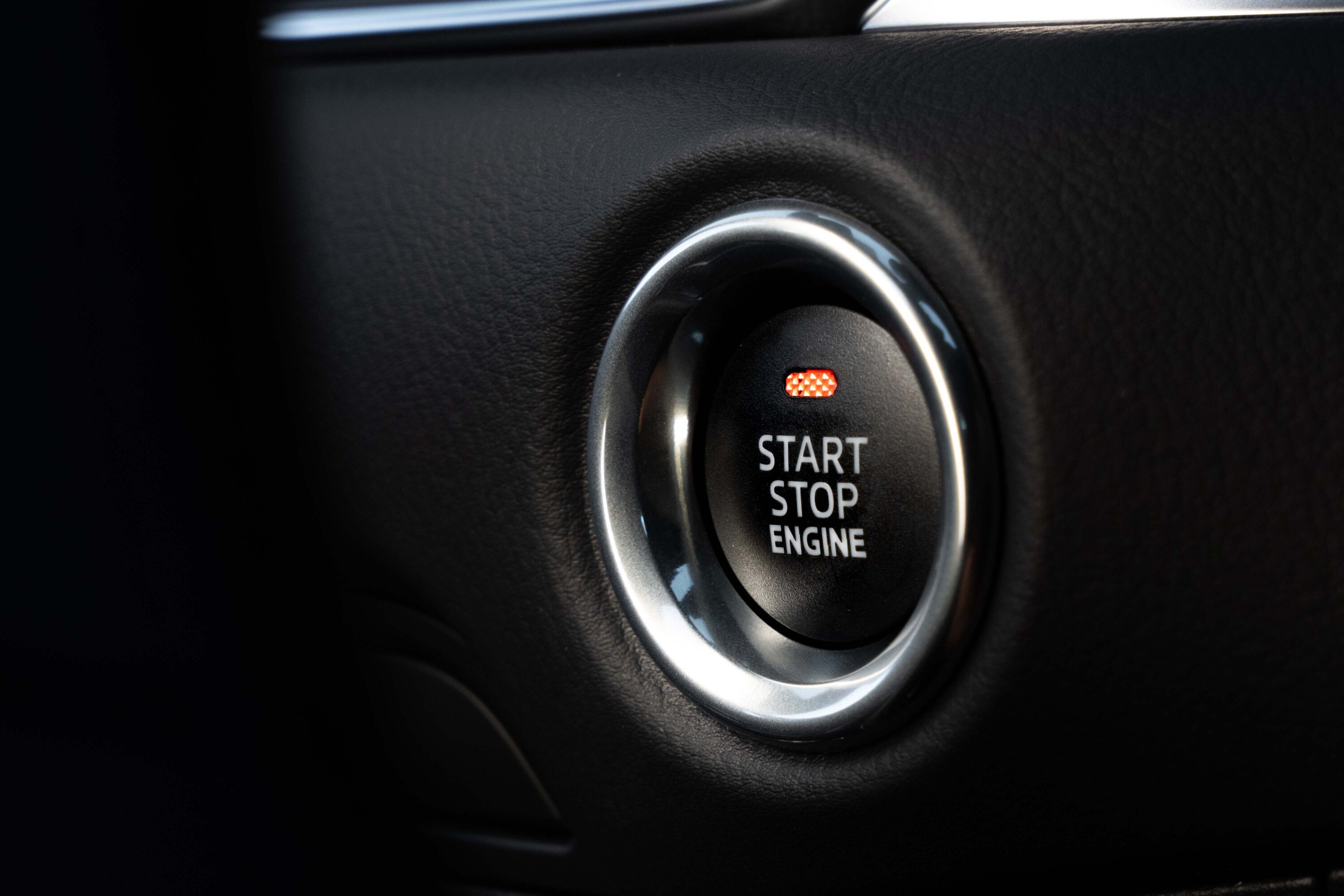
Mini matchup: Fuel consumption
| MODEL | MIN RON | COMBINED FUEL CONSUMPTION |
|---|---|---|
| Mazda CX-5 G35 Akera | 91 RON | 8.2L/100km |
| Toyota RAV4 Cruiser Hybrid AWD | 91 RON | 4.8L/100km |
| Volkswagen Tiguan 162TSI R-Line | 95 RON | 8.5L/100km |
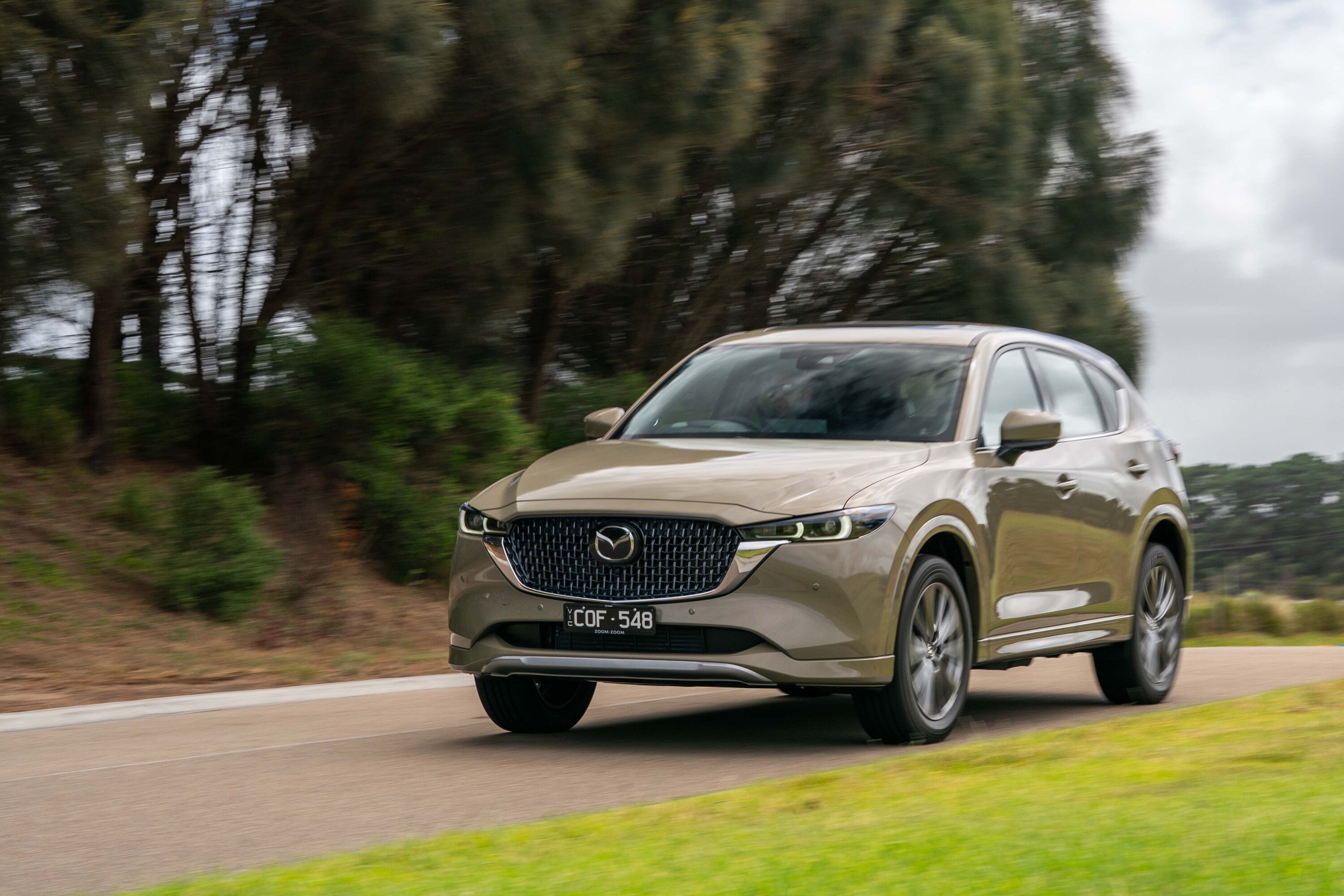
How safe is it?
Mazda CX-5’s built from January 1, 2024 are not covered by an ANCAP safety rating.
That’s because ANCAP has introduced a six-year datestamp limit, which means the CX-5’s five-star rating achieved in 2017 doesn’t apply to vehicles built after December 31, 2023. Mazda has no plans to submit the CX-5 for a retest under ANCAP’s latest 2023-25 criteria.
While there’s no doubt the CX-5 is still a safe car, it is missing some features found in newer rivals that have achieved five-star ANCAP ratings under more stringent criteria, such as a front-centre airbag to limit head clashes in a side-impact collision and more-advanced AEB detection for motorcyclists and when turning at intersections.
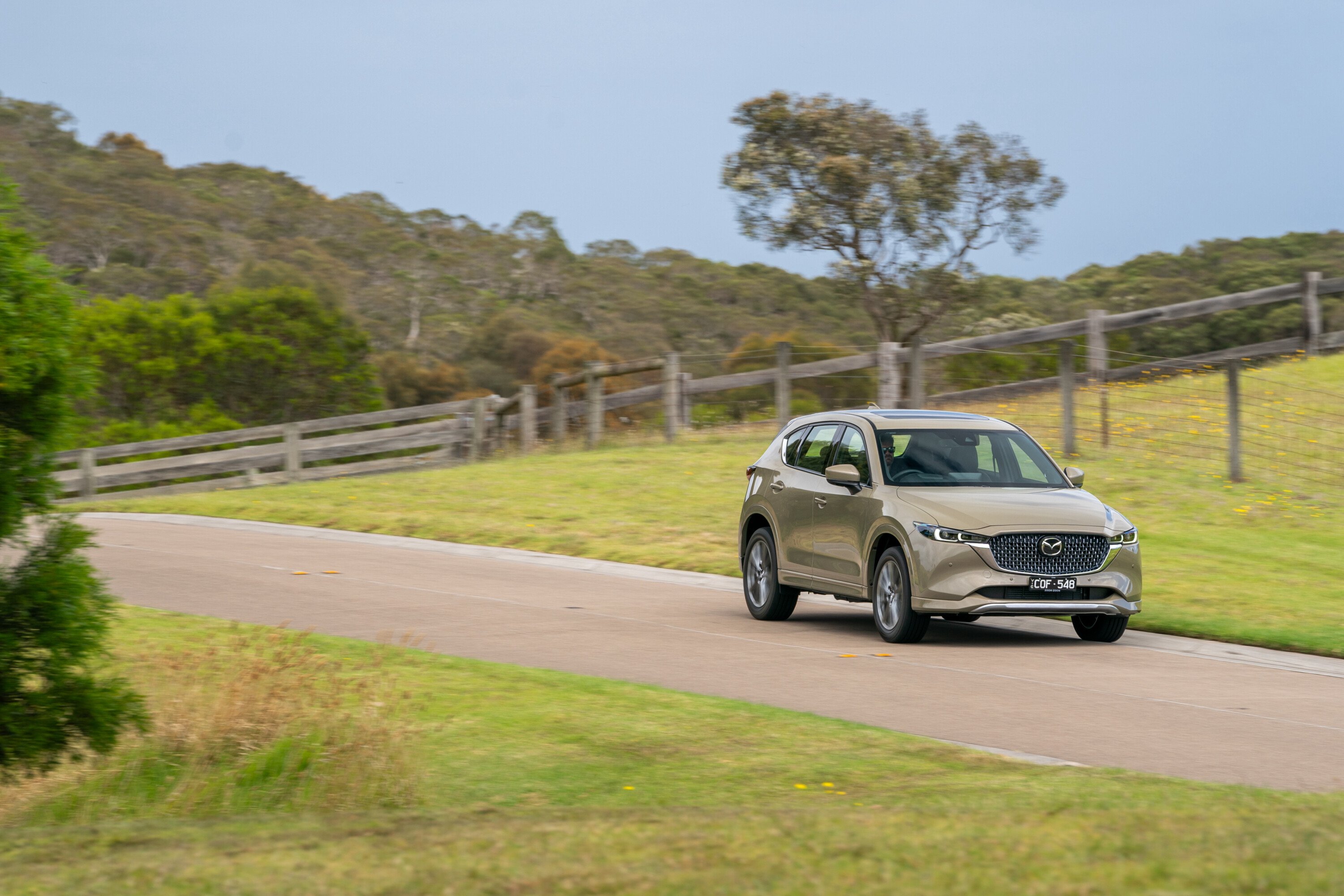
The CX-5 has six airbags (dual front, curtain and side).
We had no troubles with the CX-5’s safety systems during our test. The lane-keep assist is well-calibrated and keeps the car in the centre of the lane on freeways, and the traffic sign recognition also works well to detect speed limit, stop and no-entry signs.
Vehicle speed, traffic sign and lane-keep assist information are shown in the head-up display to reduce distraction. It also shows turn-by-turn directions when the built-in navigation is set – but not when using Apple CarPlay or Android Auto maps.
The adaptive cruise control didn’t react to slowing cars in another lane, unlike some other cars we’ve tested – though it keeps a wider gap than we’d like, even in the lowest setting, inviting cars to slot in and push you further back.
| 2024 Mazda CX-5 G35 Akera safety features | |
|---|---|
| Autonomous emergency braking (vehicle, pedestrian and cyclist) | Traffic jam assist |
| Lane-keep assist | Adaptive high beam |
| Lane departure warning | Traffic sign recognition |
| Blind-spot monitoringu00a0 | Driver attention alert |
| Rear cross-traffic alert | Front and rear parking sensors |
| Adaptive cruise control | 360-degree camera system |
Warranty and running costs
As with all Mazdas, the CX-5 is covered by a five-year/unlimited-kilometre warranty.
It has five years of capped-price servicing and complimentary roadside assistance, with no requirement for annual dealer servicing to retain it, unlike some other manufacturers.
The CX-5’s service intervals now align with most of its competitors at 12 months or 15,000 kilometres, whichever occurs first – up from 10,000km.
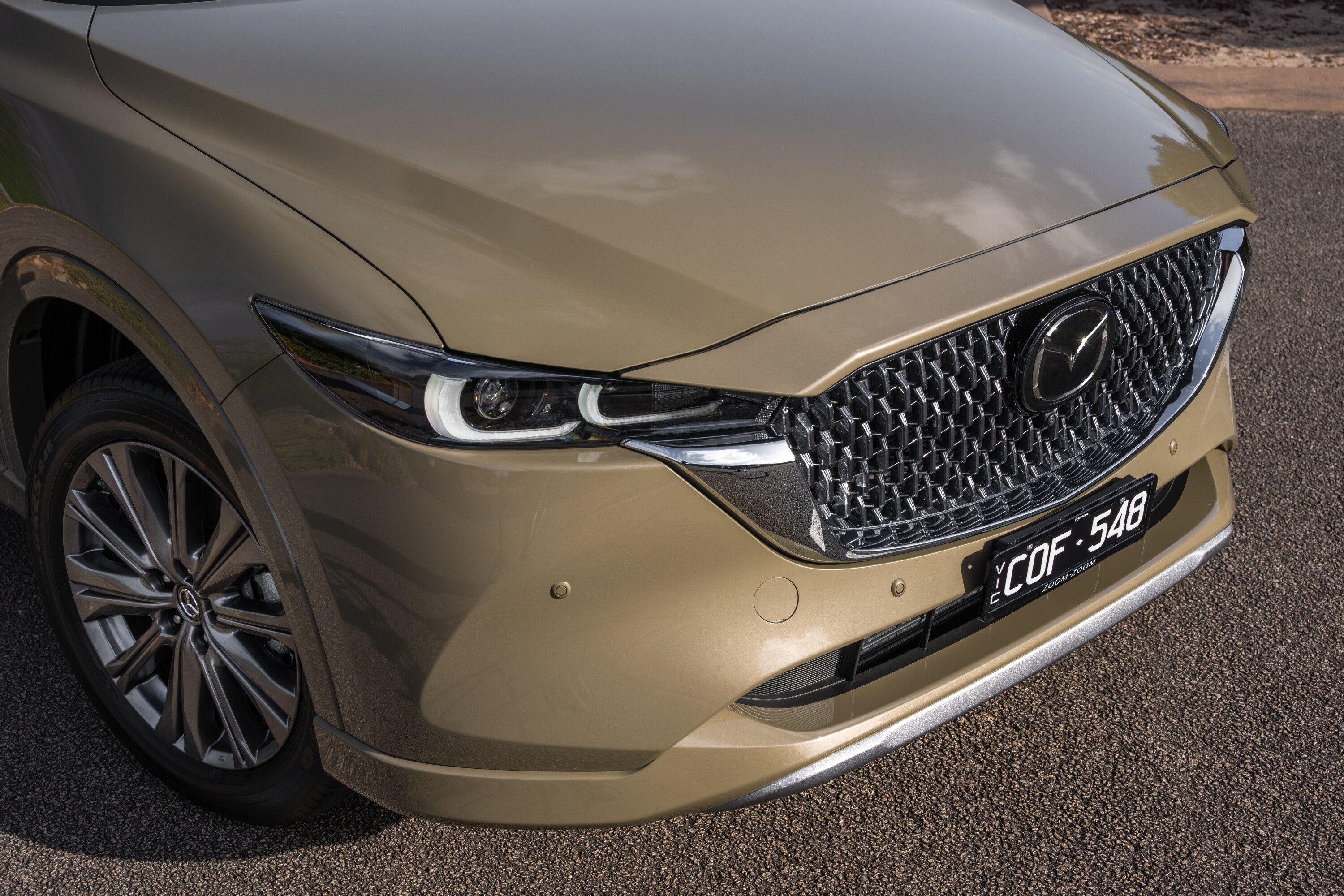
In total, the Mazda CX-5 G35 turbo will cost $2576 to service at the dealer over a five-year period, with the dearest service being the four-year/60,000km interval at $849 due to the requirement for new spark plugs.
The Honda CR-V and Toyota RAV4 are cheaper to service at the dealer over the same period at $995 and $1300, respectively, while a Volkswagen Tiguan 162TSI AWD will cost $4390 – or $3650 with a pre-paid five-year service plan.
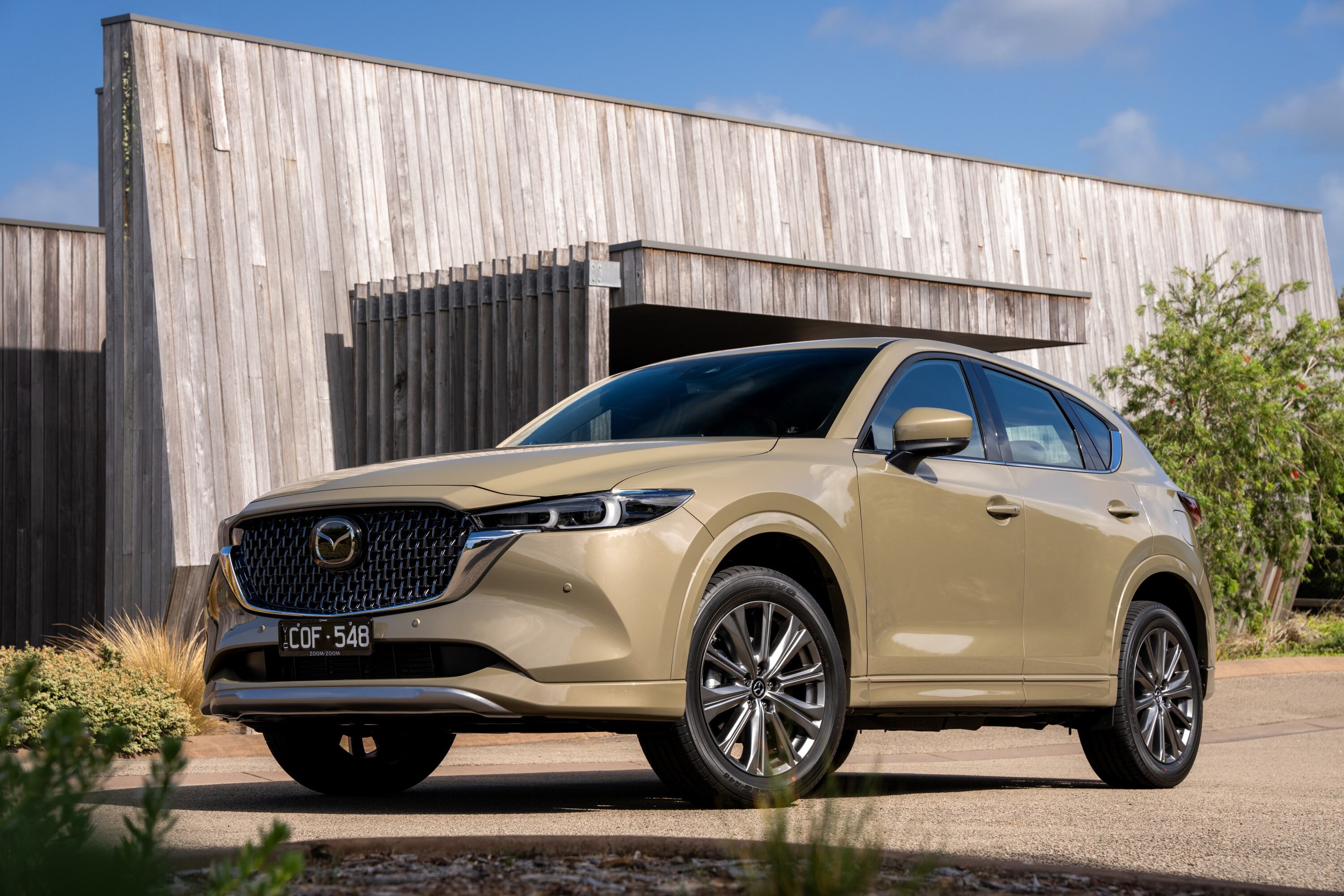
VERDICT
The Mazda CX-5 might be getting old, but it’s still an excellent midsize SUV – especially with its class-leading dynamics and strong 2.5-litre turbo-petrol.
We’d recommend the G35 GT SP if you’re after the extra power from the turbo – it still has enough standard equipment to keep you happy – or suggest sticking with a non-turbo G25 model instead if the turbo’s added grunt (and higher fuel consumption) is less appealing.
With its smaller size and older cabin technology, up-to-date rivals like the Toyota RAV4, Hyundai Tucson and Honda CR-V should also be considered with most alternatives also offering the choice of a hybrid.
Ulimately, as nice as the CX-5 is, it needs a tech refresh, more space, and a fuel-efficient hybrid option to truly compete in this crowded segment – things the next-gen model expected in 2025 should address.
Specifications
| 2024 Mazda CX-5 G35 Akera turbo AWD automatic | ||
|---|---|---|
| Engine | 2.5-litre turbocharged four-cylinder petrol | |
| Power @rpm | 170kW @ 5000rpm | |
| Torque @rpm | 420Nm @ 2000rpm | |
| Transmission | Six-speed torque converter automatic | |
| Body | Midsize SUV, five-door | |
| L/W/H | 4575mm/1845mm/1680mm | |
| Wheelbase | 2700mm | |
| Boot space | 438L / 1340L | |
| Weight | 1693kg | |
| Fuel / tank | 91 RON / 47 litres | |
| Fuel use L/100km | 8.2L (claimed) | 8.3L (on test) |
| Suspension | Front: MacPherson strut / Rear: Multi-link | |
| Steering | Electric rack-and-pinion; 11.0M | |
| Brakes | Front: ventilated discs / Rear: solid discs | |
| Wheels | 19-inch diameter / 225mm width | |
| Tyres | Toyo Proxies R46 | |
| Tyre size & spare | 225/55R19, space-saver spare | |
Score breakdown
Things we like
- Powerful turbo engine
- Well-tuned dynamics
- Premium-feeling cabin
Not so much
- High fuel consumption
- Less rear seat and boot space than rivals
- It’s starting to feel old
We recommend
-
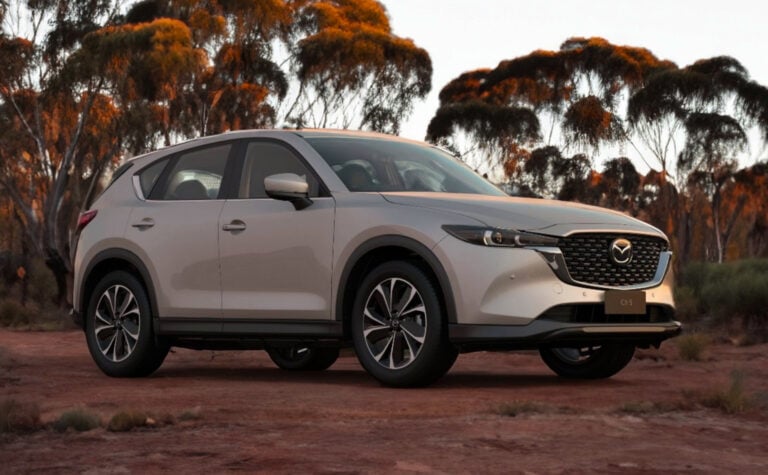 News
News2024 Mazda CX-5 pricing and features: Diesel axed
Prices up in streamlined petrol-only CX-5 line-up
-
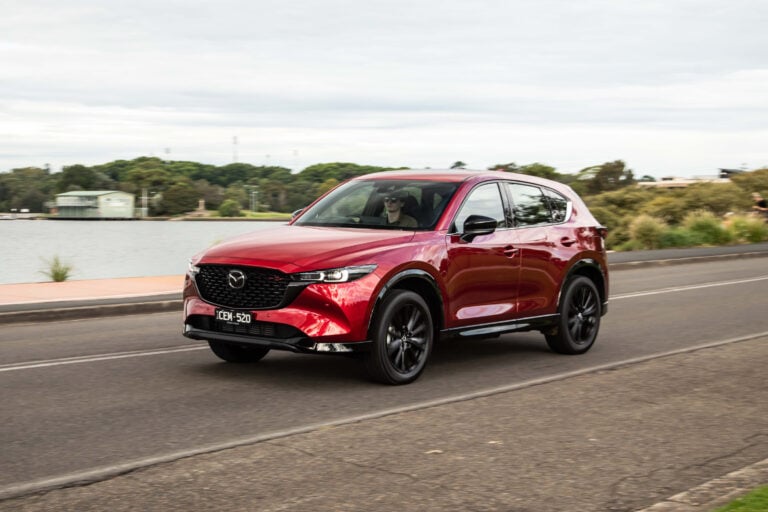 Reviews
Reviews2023 Mazda CX-5 G35 GT SP review
The CX-5 is ageing gracefully, with regular updates keeping this fan-favourite mid-sizer fresh
-
 News
NewsNew car calendar 2026: All the new cars coming to Australia next year
Here’s the WhichCar by Wheels guide to all the new cars that will launch in Australia in 2026. Check back in regularly for updates...


